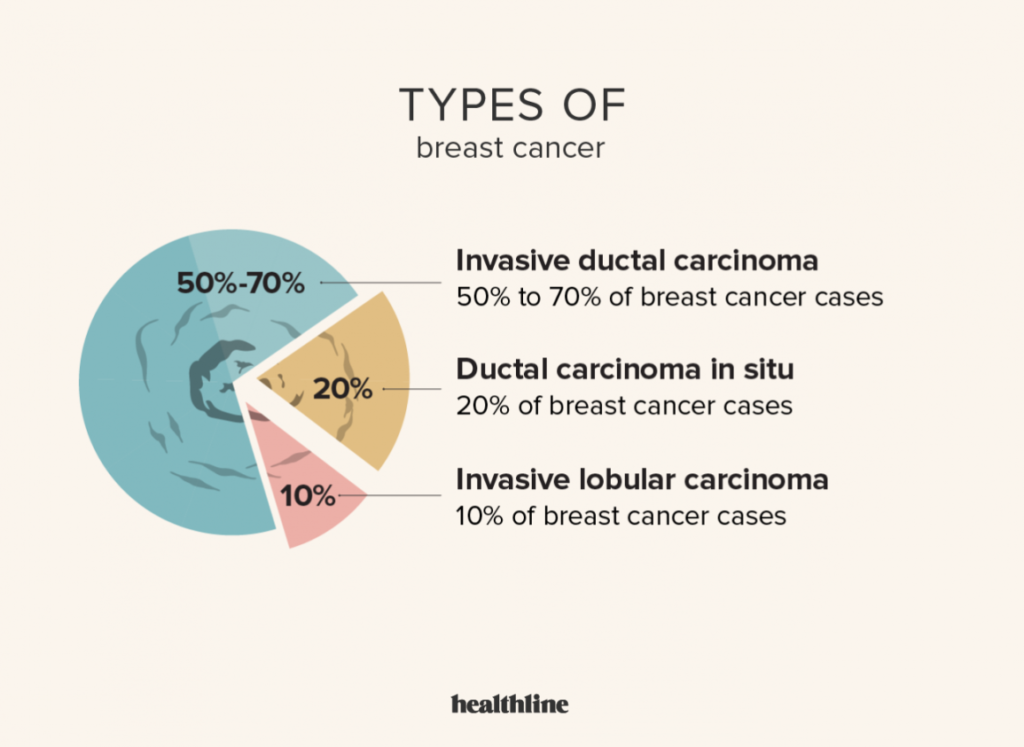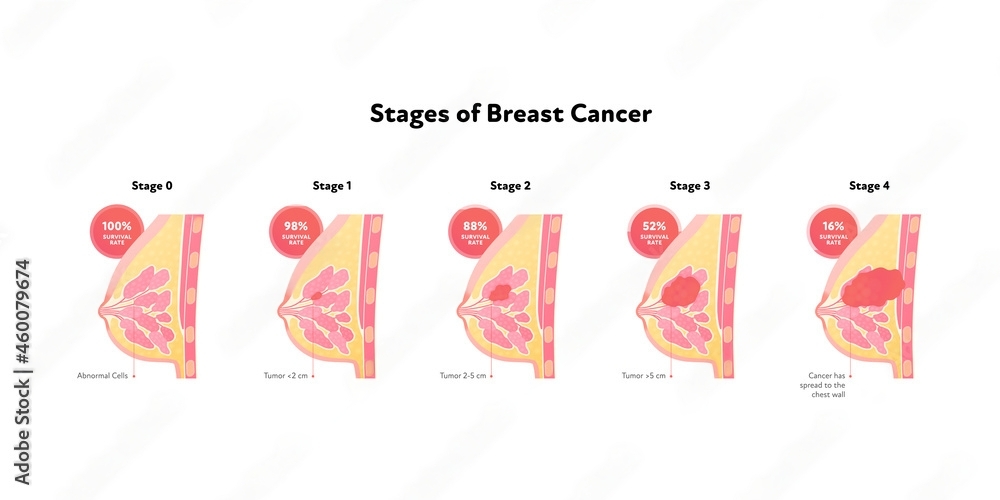Breast cancer is a complex disease with various subtypes, each presenting unique characteristics and treatment considerations. Understanding the different types of breast cancer is crucial for accurate diagnosis, personalized treatment planning, and improved outcomes. Let’s delve into the diverse landscape of breast cancer and explore its various types:
Ductal Carcinoma In Situ (DCIS):
DCIS is a non-invasive form of breast cancer where abnormal cells are confined to the milk ducts of the breast. While DCIS itself is not life-threatening, it has the potential to progress to invasive breast cancer if left untreated. Treatment typically involves surgery to remove the abnormal cells, followed by radiation therapy in some cases.

Invasive Ductal Carcinoma (IDC):
IDC is the most common type of breast cancer, accounting for approximately 80% of cases. In IDC, cancer cells invade surrounding breast tissue beyond the milk ducts, potentially spreading to nearby lymph nodes or other parts of the body. Treatment may involve surgery, chemotherapy, radiation therapy, hormone therapy, or targeted therapy, depending on the stage and characteristics of the cancer.
Invasive Lobular Carcinoma (ILC):
ILC is less common than IDC and originates in the milk-producing lobules of the breast. Unlike IDC, ILC tends to spread in a diffuse pattern throughout the breast, making it challenging to detect on imaging studies. Treatment for ILC may include surgery, chemotherapy, hormone therapy, or targeted therapy.

Triple-Negative Breast Cancer (TNBC):
TNBC is a subtype of breast cancer that lacks estrogen receptors, progesterone receptors, and HER2/neu protein expression. This aggressive form of breast cancer is typically more challenging to treat, as it does not respond to hormone therapy or targeted therapies that target estrogen, progesterone, or HER2 receptors. Treatment options for TNBC may include chemotherapy, radiation therapy, and immunotherapy.
HER2-Positive Breast Cancer:
HER2-positive breast cancer is characterized by overexpression of the HER2/neu protein, which promotes cancer cell growth. This subtype accounts for approximately 20% of breast cancer cases. Treatment for HER2-positive breast cancer often involves targeted therapies, such as HER2-targeted monoclonal antibodies or tyrosine kinase inhibitors, in addition to chemotherapy, hormone therapy, and surgery.
Inflammatory Breast Cancer (IBC):
IBC is a rare and aggressive form of breast cancer characterized by redness, swelling, and warmth in the breast. Unlike other types of breast cancer, IBC does not typically present as a distinct tumor mass and may not be detected by mammography. Treatment for IBC often involves a multimodal approach, including chemotherapy, surgery, radiation therapy, and targeted therapy.
Understanding the diverse types of breast cancer is essential for guiding treatment decisions and improving outcomes for patients. By raising awareness and promoting early detection, we can empower individuals to take proactive steps towards breast health and ultimately reduce the impact of breast cancer on lives worldwide.

